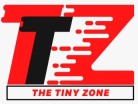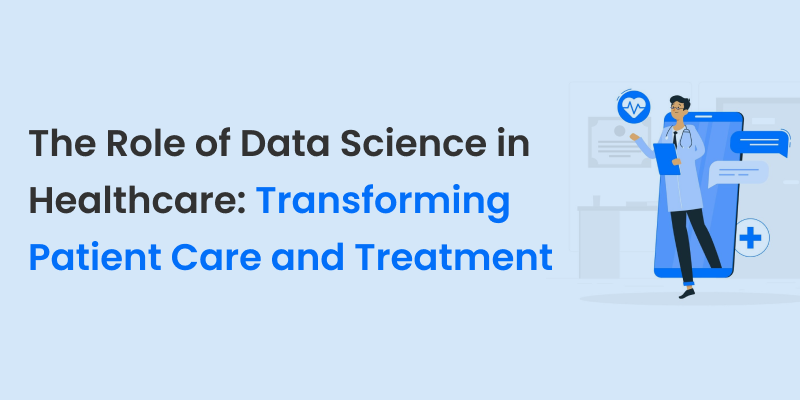Data science has emerged as a pivotal tool in healthcare, revolutionizing patient care and treatment. In an era of information abundance, healthcare professionals are increasingly harnessing the power of data to make informed decisions, improve patient outcomes, and enhance the overall quality of healthcare services.
The Data Science Training, when applied to the healthcare sector, plays a vital role in revolutionizing patient care and treatment. Data science equips professionals with tools to analyze medical data, enhance diagnostics, and improve patient outcomes. It’s a critical investment in healthcare’s future.
This article delves into the profound impact of data science in the healthcare industry, exploring how it is reshaping patient care and treatment in simple and formal language.
1. Electronic Health Records (EHRs)
Electronic Health Records (EHRs) play a pivotal role in modern healthcare by storing digital records of patient information, including medical history, diagnoses, and treatment plans. These repositories are the cornerstone of data-driven healthcare, offering healthcare providers a complete view of a patient’s health journey. Data science is instrumental in efficiently managing and analyzing EHRs, providing physicians with the tools to make quicker and more accurate diagnoses. Simultaneously, patients benefit from improved care coordination among various healthcare providers.
EHRs also allow for tracking patient outcomes over time, providing a valuable resource for evaluating treatment effectiveness and enhancing healthcare procedures. This digital transformation streamlines healthcare workflows, reduces paperwork, and enhances patient safety through easy access to critical information. In summary, EHRs are a fundamental aspect of modern healthcare that leverages data science to enhance patient care, ensure medical accuracy, and improve the overall quality of healthcare delivery.
2. Predictive Analytics
Predictive analytics in healthcare uses past patient data to predict future health developments and patterns. By using data science tools, medical professionals can spot individuals who might be at risk for different illnesses or health issues. This proactive method allows for early action and tailored care plans. For instance, it can find people with a higher chance of getting diabetes, enabling doctors to suggest lifestyle changes or preventive steps. This data-based approach empowers both patients and healthcare providers to act early to prevent or reduce possible health problems. This, in turn, lowers healthcare expenses and enhances patient health. It’s a win-win, as it saves money and ensures better well-being for patients by catching problems before they become serious.
3. Precision Medicine
Precision medicine is a revolutionary approach in healthcare that customizes medical treatment for each individual, taking into account their genetic, lifestyle, and environmental factors. By examining extensive data, such as genetic information, scientists and doctors can pinpoint the best treatment options for a particular patient. This personalization minimizes the guesswork in treatment, lessens side effects, and enhances the effectiveness of therapies. In the field of cancer treatment, precision medicine is especially transformative. It involves analyzing the genetic makeup of tumors to create specific, targeted therapies. This breakthrough not only prolongs the lives of cancer patients but also enhances their overall well-being. In simple terms, precision medicine ensures that medical care is tailored to each person’s unique needs, making treatments safer and more effective, with particularly significant benefits in the fight against cancer.
4. Drug Discovery and Development
The process of discovering and developing new drugs is a time-consuming and expensive journey. Fortunately, data science has emerged as a powerful tool for accelerating drug discovery. By sifting through massive datasets, data scientists can pinpoint potential drug candidates with remarkable efficiency. Machine learning algorithms play a pivotal role in predicting how new compounds will interact with biological systems, significantly expediting drug development. This breakthrough has led to the creation of groundbreaking treatments for a wide range of diseases, from rare genetic disorders to more common ailments.
The swiftness and precision of data-driven drug discovery not only curtail expenses but also hasten the introduction of new medications to the market. This, in turn, offers hope to patients in dire need of innovative therapies. In simple terms, data-driven drug discovery is a game-changer that makes the process faster, cheaper, and more effective, ultimately bringing relief to those suffering from various medical conditions.
5. Healthcare Imaging
The realm of medical imaging has undergone a profound evolution thanks to the integration of data science. This transformation is particularly evident in the interpretation of medical images like X-rays, MRIs, and CT scans, where the integration of machine learning models has had a substantial impact. These models now serve as invaluable allies to radiologists and medical professionals, significantly enhancing the detection of abnormalities and the accuracy of diagnoses. Not only do they reduce the risk of human error, but they also expedite the diagnostic process, expediting patient care.
Furthermore, this technology facilitates ongoing disease monitoring, enabling timely interventions and ultimately leading to improved patient outcomes. For instance, in cardiology, these tools are indispensable for identifying heart conditions, while in radiology, they play a critical role in the early detection of tumors and other anomalies. As a result, the collaboration between data science and medicine has ushered in a new era of precision and efficiency in healthcare, benefiting patients and healthcare providers alike.
6. Telehealth and Remote Patient Monitoring
Telehealth, made possible by data science, has revolutionized healthcare accessibility and patient care. Telehealth services provide patients with remote access to healthcare professionals, enabling consultations and treatment plans from the comfort of their own homes. Remote patient monitoring, another data-driven innovation, allows healthcare providers to continuously track patients’ vital signs and health data. This real-time information enables early detection of health issues, reduces the need for frequent hospital visits, and enhances the overall quality of care for patients, especially those with chronic conditions.
7. Healthcare Cost Optimization
Data science has also played a pivotal role in optimizing healthcare costs. Through the analysis of patient data, hospitals and insurance companies can identify cost-effective treatments and interventions. This information can lead to better resource allocation, reduced waste, and the development of strategies to control rising healthcare expenses. By understanding which treatments yield the best outcomes at the lowest cost, healthcare organizations can make informed decisions that benefit both patients and their bottom line.
Conclusion
Data science has emerged as a transformative force in healthcare, reshaping patient care and treatment in profound ways. From EHRs and predictive analytics to precision medicine and drug discovery, data-driven insights are enhancing healthcare outcomes, reducing costs, and increasing accessibility. These advancements are a testament to the power of data science to revolutionize an industry that impacts the well-being of individuals worldwide. As technology continues to evolve, the role of data science in healthcare is likely to grow, promising a future of more personalized, efficient, and effective healthcare services for all.


